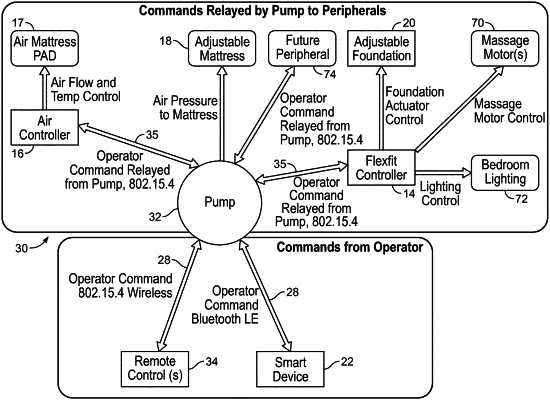| CPC A47C 27/082 (2013.01) [A47C 20/04 (2013.01); A47C 21/042 (2013.01); A47C 21/048 (2013.01); A47C 27/083 (2013.01); A47C 31/008 (2013.01)] | 15 Claims |

|
1. A pump comprising:
a pump encasement that physically houses the pump;
a pressure transducer configured to sense pressure within a fluidically connected air chamber of an air mattress of a bed;
wherein the pump is configured to execute instructions that cause the pump to:
form wireless network connections with:
at least one remote control configured to 1) receive user input and 2) responsive to the received user input, transmit a corresponding user command to the pump;
a plurality of peripheral controllers, each peripheral controller controlling at least one controllable peripheral devices of the bed, each of the controllable peripheral devices configured to alter a sleep environment of the bed according to one or more control signals a received from the pump over the associated wireless network connection, the peripheral controllers configured to 1) receive, over an associated wireless network connection with the pump, the one or more control signals, and 2) control behavior of the associated controllable peripheral device in accordance with the one or more control signals;
receive an incoming user command from a particular remote control of the at least one remote controls;
access a corresponding control signal based on the received incoming user command; and
transmit the corresponding control signal to at least one of the plurality of peripheral controllers over the associated wireless network connection to cause the sleep environment of the bed to be altered.
|